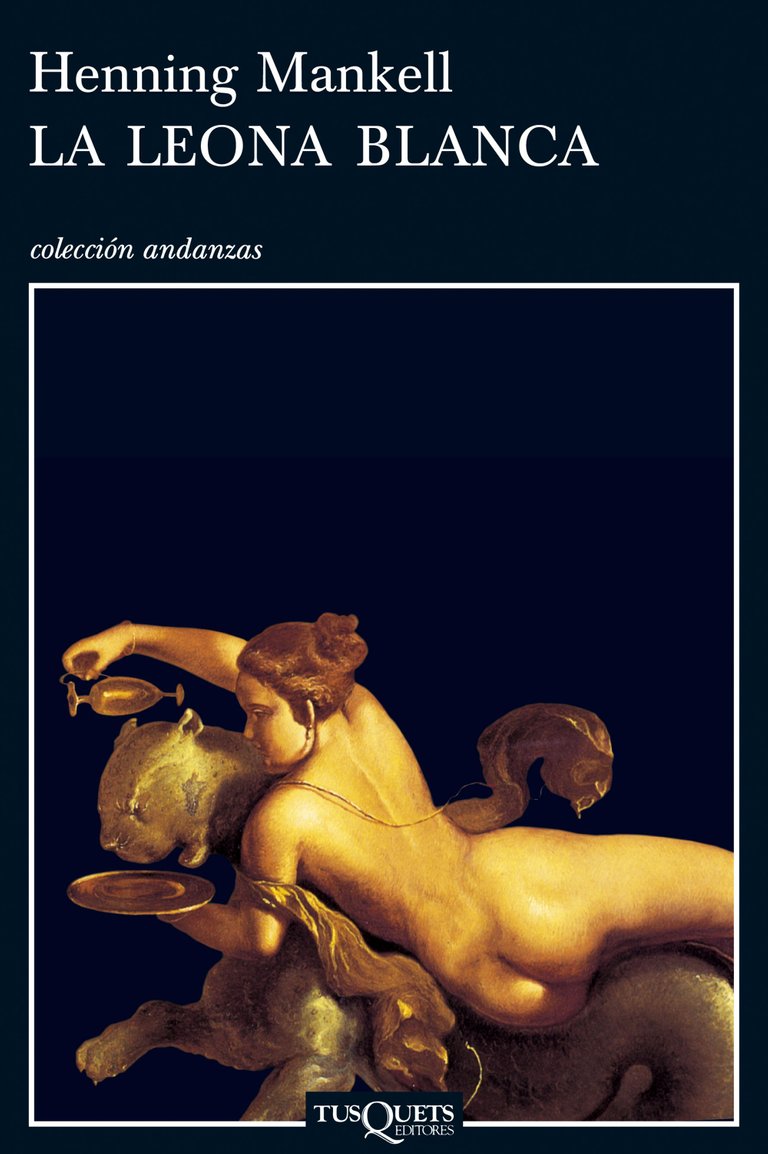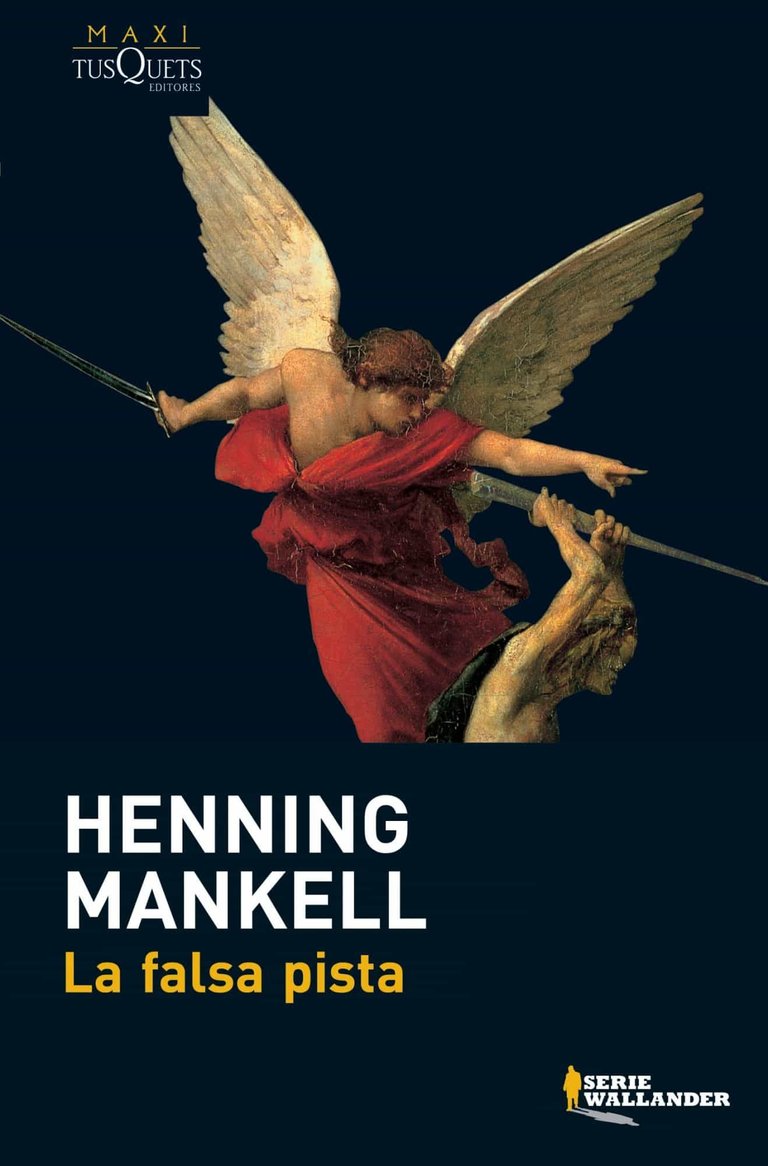
After a couple of weeks without appearing in this beautiful community to which I am proud to belong (publishing, it is understood) I am back again and eager to share with all the literary #hivers the review of a book I read some time ago and of which I am constantly reminded: The White Lioness by Henning Mankell, third installment of his saga dedicated to commissioner Kurt Wallander.
Después de un par de semanas sin aparecer por esta hermosa comunidad a la cuál me enorgullezco de pertenecer (publicando, se entiende) estoy de nuevo de vuelta y con muchas ganas de compartir con todos los #hivers literatos la reseña de un libro que leí hace ya tiempo y del cuál me recuerdo constantemente: La Leona Blanca de Henning Mankell, tercer entrega de su saga dedicada al comisario Kurt Wallander.

The White Lioness is the third story of the saga of police inspector Kurt Wallander set in Sweden (in Ystad, Wallander's hometown, which really exists and is located in the extreme south of Sweden, only 90 km from Copenhagen, Denmark and accessible by sea in less than 1 hour) and South Africa.
As far as the African setting is concerned, these are places very well known to the author since he has lived in those lands for most of his life, specifically in Maputo (Mozambique).
La Leona Blanca es la tercera historia de la saga del inspector de policía Kurt Wallander ambientada en Suecia (en Ystad la ciudad natal de Wallander que realmente existe y está ubicada en el extremo sur de Suecia distante apenas 90 kms de Copenhague, Dinamarca y accesible por via marítima en menos de 1 hora) y Sudáfrica.
En lo que se refiere a la ambientación africana son lugares muy conocidos por el autor ya que ha vivido en esas tierras gran parte de su vida, específicamente en Maputo (Mozambique).

The plot develops in the book in parallel on two fronts or parallel levels contemporaneously until reaching the conclusive part of the novel.
On the one hand, the last period of apartheid in South Africa, where President Frederik Willem de Klerk (with the ghost of Mandela -unjustly imprisoned- on his back) risks for the first time in many years losing his majority in power to the African National Congress, the black and nationalist South African party that has been claiming for many years its power to govern the country.
On the other hand, the plot is enriched by the investigation being carried out in Sweden by our well-known Kurt Wallander into the murder of Louise Åkerblom, a Methodist real estate agent in the Swedish city of Ystad, whose body is found at the bottom of a well.
Immediately other elements are added to the investigation: the finger of a black man, a detonator that causes a loud explosion and a gun at the crime scene.
All these elements lead Wallander and his men, among them the forensic technician Nyberg, to consider the clue of the plot of a former Russian KGB agent who has arrived in Sweden with the aim of assassinating an important South African personality.
The ruthless struggle between blacks and whites in South Africa and the exploitation of this conflict by the great powers for decades and decades, making huge profits, is revealed in every paragraph.
As one of his final paragraphs when two of his characters express: (I quote verbatim from the book's paragraphs):
"How should we act in your opinion?
Like the communists in Russia, arm ourselves and climb the iceberg to become partisans?
And you seem to me to forget that it's not just about British numerical superiority. What threatens our real world the most are the aborigines, the blacks.
"Those will never play a major role," he replied.
La trama se va desarrolando en el libro en forma paralela en dos frentes o niveles paralelos contemporáamente hasta llegar a la parte conclusiva de la novela.
Por un lado el último período del apartheid en Sudáfrica, donde el presidente Frederik Willem de Klerk (con el fantasma de Mandela -encarcerado injustamente- a sus espaldas arriesga por primera vez en muchos años de perder la mayoría que detenta en el poder a manos del Congreso Nacional Africano el partido negro y nacionalista sudafricano que reinvindica desde hace muchos años su potestad de gobernr el país.
Por el otro lado la trama se enriquece con la investigación que está llevand a cabo en Suecia nuestro conocido Kurt Wallander sobre el asesinato de Louise Åkerblom, una agente inmobiliaria metodista, en la ciudad sueca de Ystad, cuyo cuerpo es encontrado en el fondo de un pozo.
Inmediatamente se agregan otros elementos a la investigación: el dedo de un hombre negro, un detonador que provoca una fuerte explosión y un arma en el lugar del crimen en el lugar del crimen.
Todos estos elementos llegan a Wallander y a sus hombres entre los que se destaca el técnico forense Nyberg, a considerar la pista del complot de un ex-agente de la KGB rusa que ha llegado a Suecia con el objetivo de asesinar a una importante personalidad sudafricana.
La despiadada lucha entre blancos y negros en Sudáfrica y el aprovechamiento que las grandes potencias hicieron por décadas y décadas de este conflicto sacando ingentes ganancias se deja traslucir en cada párrafo.
Como uno de sus párrafos finales cuando dos de sus personajes expresan: (cito testualmente los párrafos del libro):
"¿Cómo deberíamos actuar en su opinión?
¿Como los comunistas en Rusia? ¿Armarnos y escalar el iceberg para ser partisanos?
Y me parece que olvidas que no se trata solo de la superioridad numérica británica. Lo que más amenaza a nuestro mundo real son los aborígenes, los negros.
"Esos nunca jugarán un papel importante", respondió.

Henning Mankell is an author and his alter ego, Commissioner Kurt Wallander, are characters that I like for their humanity, complex as any person and devoid of any hint of superheroes.
Mankell's intention in The White Lioness is to show to an audience of a certain stereotype such as the Swedish (but also to the rest of the world) a complex reality such as South Africa and apartheid, a concept that we have heard a thousand times in the media but that few people have managed to understand in its right dimension.
It is not only about struggles between colonialist whites and blacks who are former slaves of those same whites.
The ambition of the book goes beyond that and is adapted to modern times, even if the ending is a bit "predicted".
It remains, however, the very essence of a society that ignores the conflict (the Swedish) and another that does not find a solution (the South African).
Henning Mankell es un autor y su alter ego el comisario Kurt Wallander son personajes que me gustan por su humanidad, complejos como cualquier persona y desprovistos de cualquier atisbo de superhéroes.
La intención de Mankell en La Leona Blanca es mostrar a un público de un estereotipo determinado como es el sueco (pero también al resto del mundo) una realidad compleja como es la de Sudáfrica y el apartheid, un concepto que hemos escuchado mil veces en los medios de comunicación pero que pocas personas han logrado entender en su justa dimensión.
No se trata solo de luchas entre blancos colonialistas y negros ex-esclavos de esos mismos blancos.
La ambición del libro va más allá y se adecúa a los tiempos modernos aunque el final sea un poco "pronosticado". Queda de cualquier manera la esencia misma de una sociedad que ignora el conflicto (la sueca) y otra que no le encuentra solución (la sudafricana).


